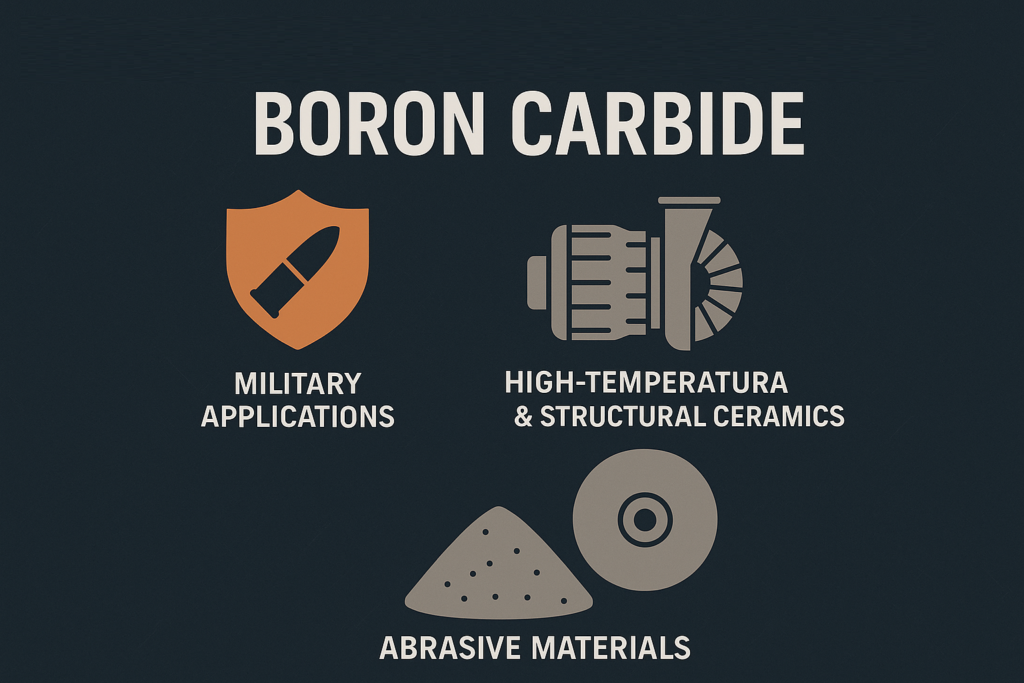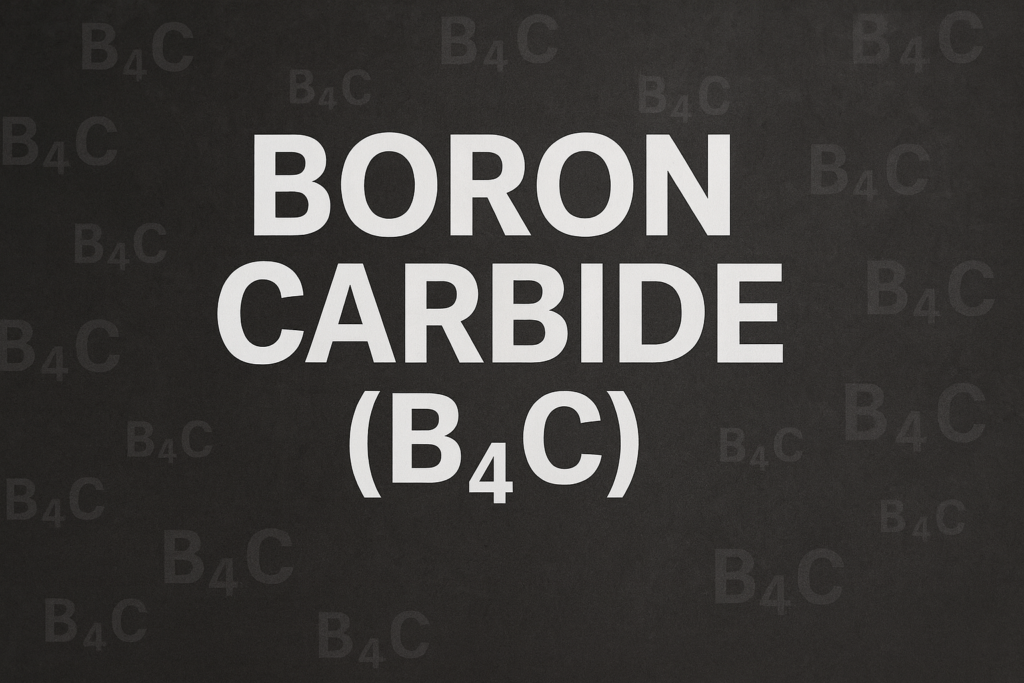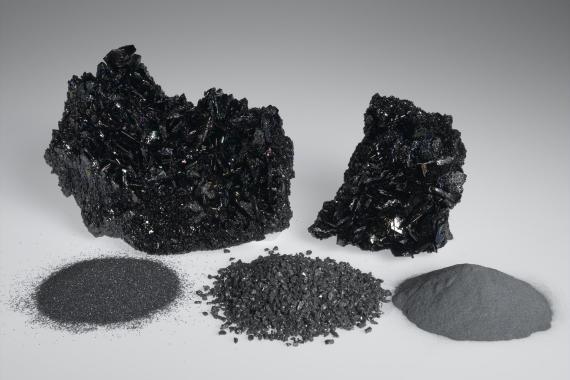Silicon Carbide is produced by heating quartz sand and a carbon source, typically petroleum coke, to high temperatures in a large “Acheson” furnace.
The result of this high temperature process is the crystalline formation of Silicon Carbide grains, of both Green and Black coloring.
The color difference is due to the purity of the silicon carbide, green SiC being higher purity due to its closer proximity to the heat source of the furnace.
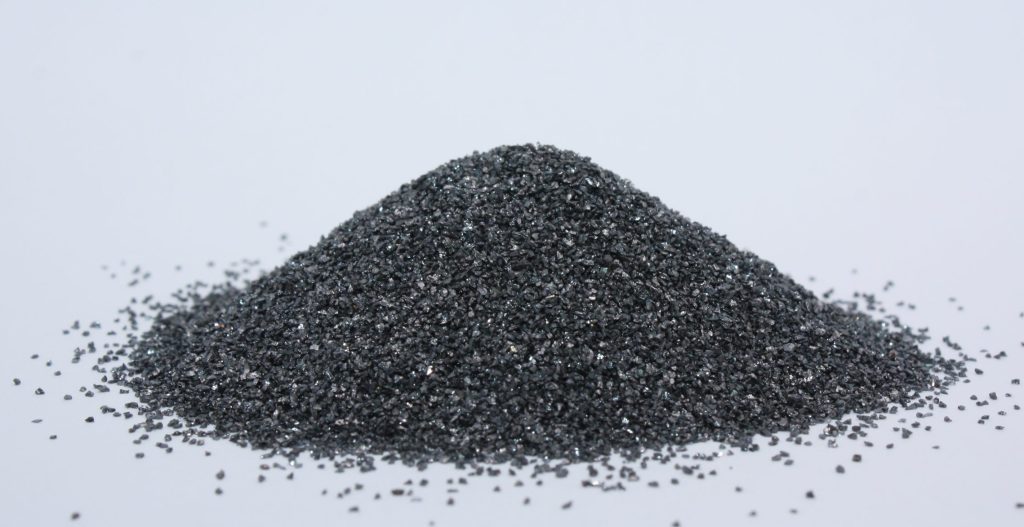
What are the properties of silicon carbide?
1. Hardness
SiC stands as one of the hardest materials known, surpassed only by diamond and boron carbide.
This exceptional hardness makes it ideal for abrasive applications where durability is key.
2. Chemical Stability
Demonstrating remarkable chemical inertness, SiC resists corrosion even under extreme temperatures or in harsh chemical environments, ensuring longevity and reliability in challenging conditions.
3. Thermal Conductivity
With its high thermal conductivity, SiC excels in heat dissipation, a critical feature for managing high temperatures in various applications.
4. Electrical Conductivity
SiC’s electrical conductivity spans from being an insulator to a semiconductor, based on its purity and crystalline structure.
This versatility makes it indispensable in electronic components, particularly for high-voltage operations.
5. Thermal Shock Resistance
SiC’s ability to withstand abrupt temperature variations without succumbing to cracks is essential for materials exposed to high-temperature fluctuations.
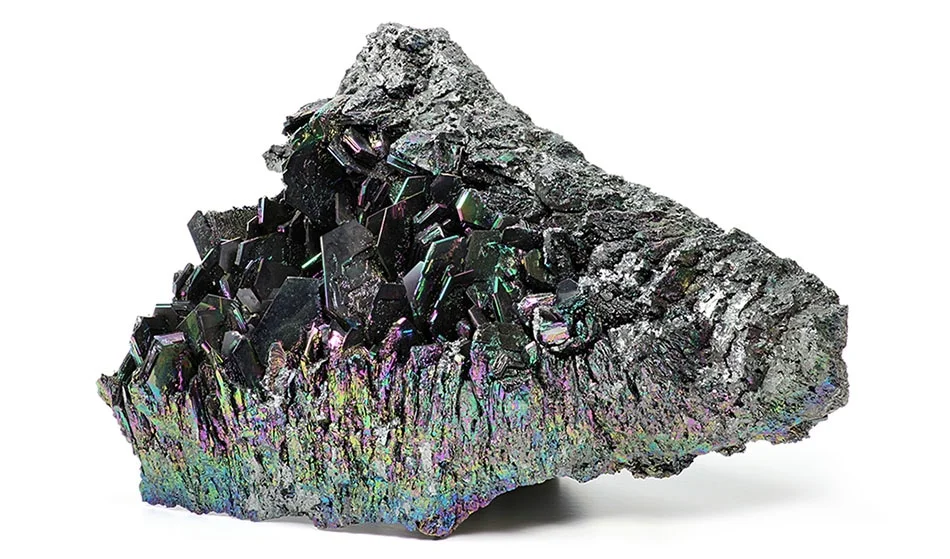
These properties position Silicon Carbide as a superior choice for applications demanding extreme hardness, chemical stability, efficient heat management, variable electrical conductivity, and robust thermal shock resistance.
What are the specifications of silicon carbide?
| Chemical Analysis | ||
|---|---|---|
| Spec | Black SiC | Green SiC |
| SiC | 98% Min | 99% Min |
| Fe2O3 | 0.3% Max | |
| F.C | 0.4% Max | 0.3% Max |
| Physical Property | ||
|---|---|---|
| Spec | Black SiC | Green SiC |
| Color | Black | Green |
| Crystal Structure | α-SiC | |
| Microhardness | 2820-3320 kg/mm2 | 3280-3480 kg/mm2 |
| True Density | 3.2-3.4 g/cm3 | |
| Magnetic objects | 0.02% Max | |
How is Silicon Carbide Produced?
Silicon Carbide is a synthetic compound that stands out for its exceptional hardness, thermal conductivity, and resistance to chemical wear, making it highly sought after in various industrial applications, including abrasives, semiconductors, and more.
The production of SiC is a sophisticated process that involves several critical stages:
1. Raw Material Preparation
The primary raw materials used in the production of Silicon Carbide are high-purity silica sand (SiO2) and carbon sources like petroleum coke.
These materials are carefully selected and prepared to ensure the highest purity and optimal reaction conditions.
2. The Acheson Process
The most common method for producing Silicon Carbide is the Acheson process, named after its inventor Edward Goodrich Acheson.
This process involves the following steps:
1)Mixing
The prepared raw materials are mixed together in the correct proportions.
2)Forming
The mixture is formed into a desired shape, often a large, elongated pile known as a “batch.”
3)Heating
The batch is then placed in an electric resistance furnace.
A core of graphite, acting as a resistive heating element, runs through the center of this batch.
4)Reaction
The furnace is heated to temperatures around 2,500°C (4,532°F).
At this temperature, the silica and carbon react to form Silicon Carbide and carbon monoxide gas: SiO2 +3C→SiC+2CO
5)Cooling
After the reaction is complete, the furnace is allowed to cool naturally.
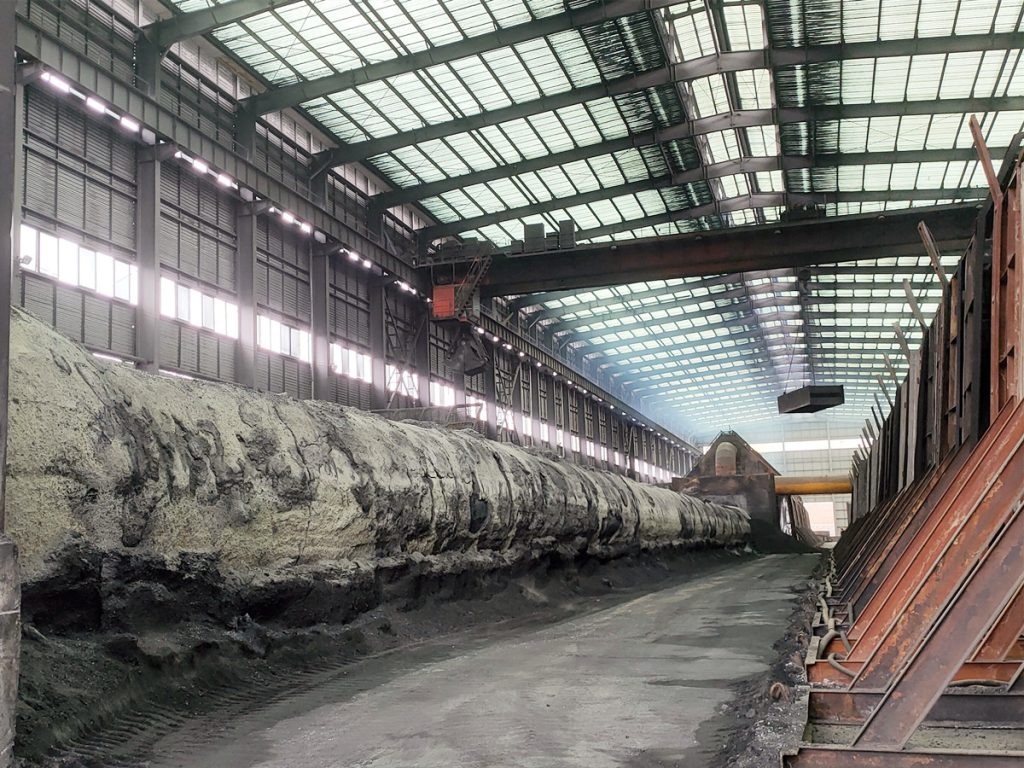
3. Crushing and Grading
Once cooled, the solid Silicon Carbide is crushed into coarse grains or powders of varying sizes.
This material is then sorted or graded based on particle size and shape, tailored to specific applications.
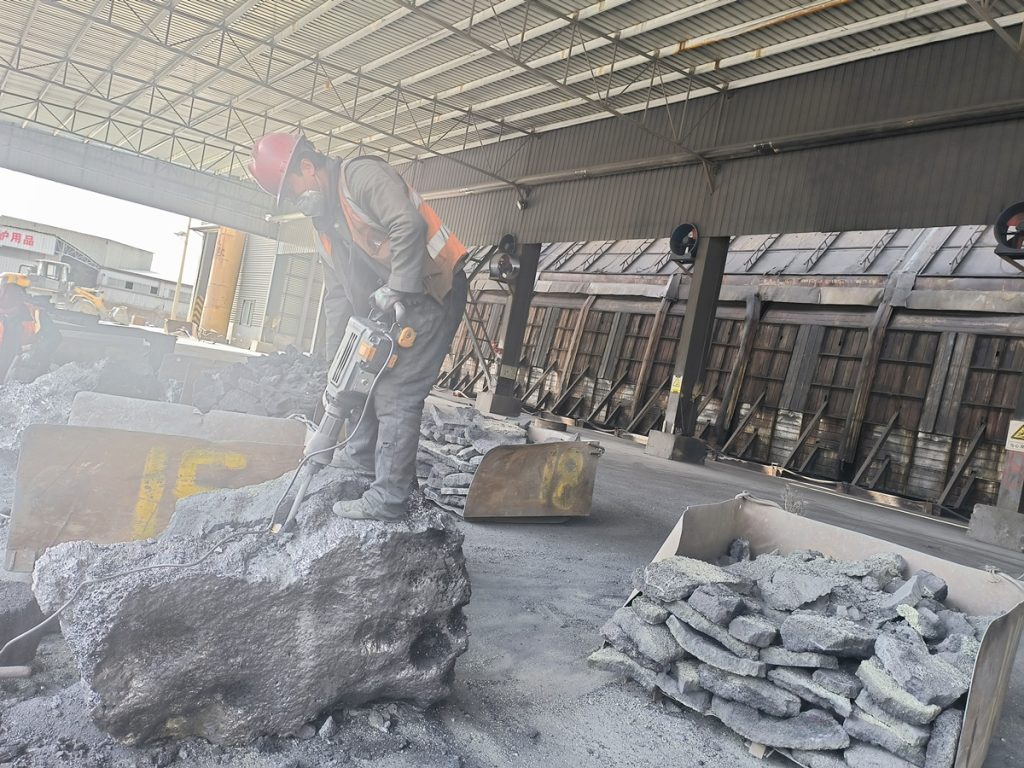
4. Purification
To achieve the high purity required for certain applications, the Silicon Carbide may undergo additional purification processes.
This can include chemical treatment to remove metallic impurities and further thermal processing to get rid of excess carbon.
5. Modification and Packaging
Finally, the Silicon Carbide can be treated or modified to enhance certain properties, such as surface roughness or chemical reactivity, according to specific customer requirements.
It is then packaged and prepared for shipping.
What Areas Can Silicon Carbide Be Used In?
Silicon carbide is a highly versatile material used across a wide range of industries due to its exceptional thermal, mechanical, and electrical properties. Here are some of the key application areas:
1. Abrasives
SiC is one of the hardest materials available, making it ideal for use in abrasive wheels, sandpaper, and as a lapping agent in polishing materials.
Its superior hardness and thermal stability enable it to efficiently cut, grind, and polish hard materials.
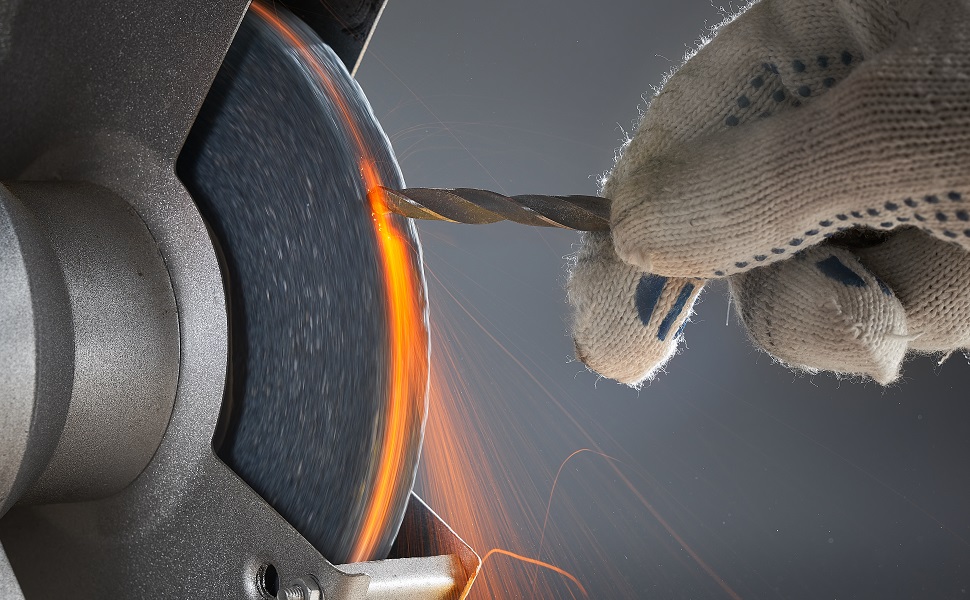
2. Refractories
Due to its high thermal conductivity and resistance to thermal shock, SiC is extensively used in refractory linings for furnaces, kilns, incinerators, and reactors.
It helps in improving energy efficiency and prolonging furnace life.

3. Semiconductors
SiC is used in semiconductor electronics where high temperatures and voltages are prevalent.
Its ability to operate at high temperatures and its excellent electrical conductivity make it a suitable choice for power electronic devices, including diodes, transistors, and LED lights.

4. Automotive
In the automotive industry, SiC components are used in electric vehicles (EVs) and hybrid electric vehicles (HEVs) for power electronics, such as inverters and converters, to enhance efficiency and performance due to their ability to handle high voltages and temperatures.

5. Ceramics
SiC ceramics are known for their high strength, thermal stability, and resistance to wear and corrosion. They are used in various applications, including ballistic armor, nozzles, bearings, and mechanical seals.

6. Energy
SiC plays a crucial role in energy applications, including as a material for solar photovoltaic cells and in nuclear fuel particles due to its radiation resistance.
It’s also used in power conversion systems, contributing to more efficient power systems with lower energy losses.

7. Aerospace
The material’s resistance to extreme temperatures and thermal shock makes it suitable for aerospace applications, including as components in rocket engines and as protective tiles for spacecraft.

8. Industrial Heat Applications
SiC’s thermal conductivity makes it ideal for use in industrial heating elements and furnaces, where it can withstand high temperatures and aggressive environments.
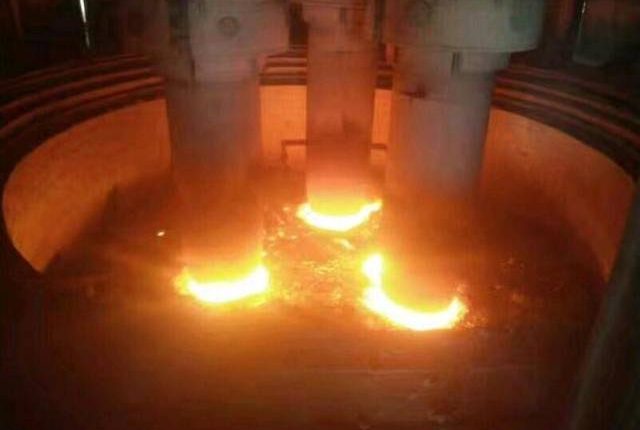
Key Considerations When Buying Silicon Carbide
Selecting silicon carbide (SiC) for abrasive applications requires a focus on essential factors that ensure you achieve the best balance between performance, value, and partnership quality. Here’s a streamlined guide to aid in your procurement decision:
1. Application Needs
Identify Key Properties: Essential SiC characteristics like hardness and abrasion resistance should match your specific needs.
Compatibility: Ensure the SiC’s particle size and purity align with your process requirements.
2. Supplier Evaluation
Quality Assurance: Opt for suppliers with stringent quality control and relevant certifications for consistent product quality.
Supply Stability: Choose suppliers with reliable delivery records and stable supply chains.
Expert Support: Select suppliers that provide comprehensive technical support and guidance.
3. Consider Regulatory Compliance
Environmental Regulations: Ensure the SiC and its production process comply with environmental regulations applicable in your market to avoid legal and reputational risks.
Safety Standards: Verify that the SiC meets safety standards, especially if it will be used in applications with elevated risks.
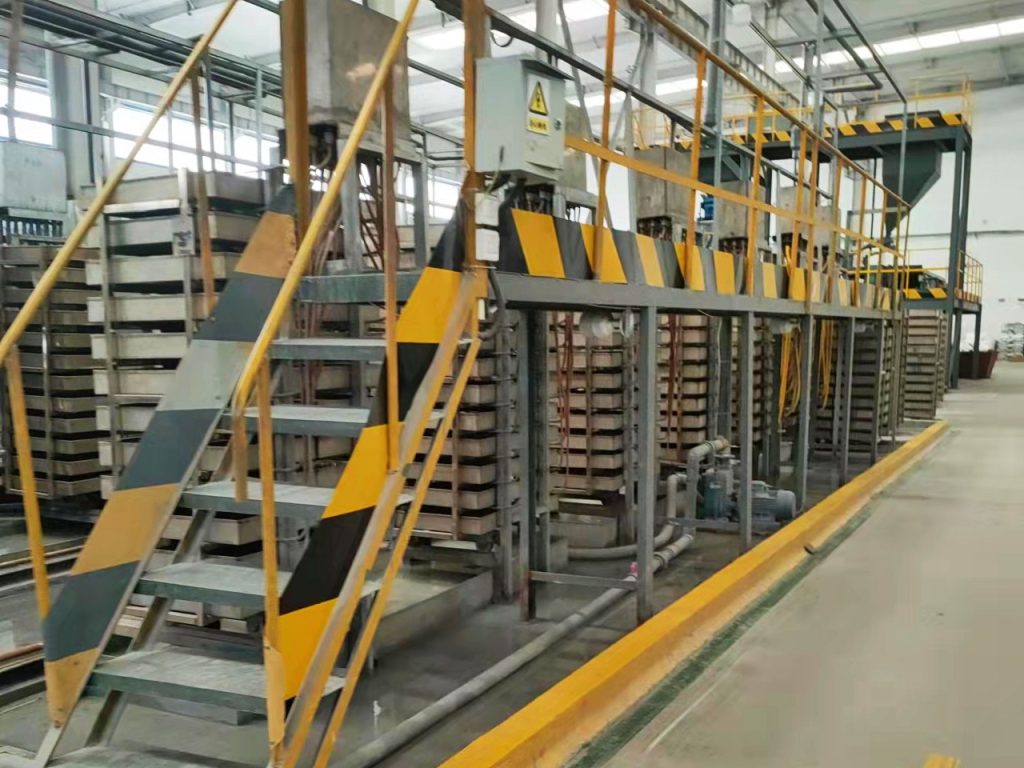
4. Price Stability and Cost Guidance
Price Stability: Engage with suppliers who offer transparent pricing and are willing to discuss long-term contracts to mitigate price volatility.
Cost-Effectiveness: Prioritize suppliers that offer competitive pricing without compromising quality, along with price guidance to leverage market trends for cost reductions.
5. Attention to Detail
Detail-Oriented Partnership: Favor suppliers known for their meticulous attention to quality, packaging, transportation, and documentation. A supplier that ensures a seamless, worry-free experience across all procurement aspects is invaluable.
6. Compliance and Sustainability
Regulatory Adherence: Ensure compliance with environmental and safety regulations relevant to your operations.
Eco-friendly Sourcing: Prefer suppliers committed to sustainability and ethical practices.
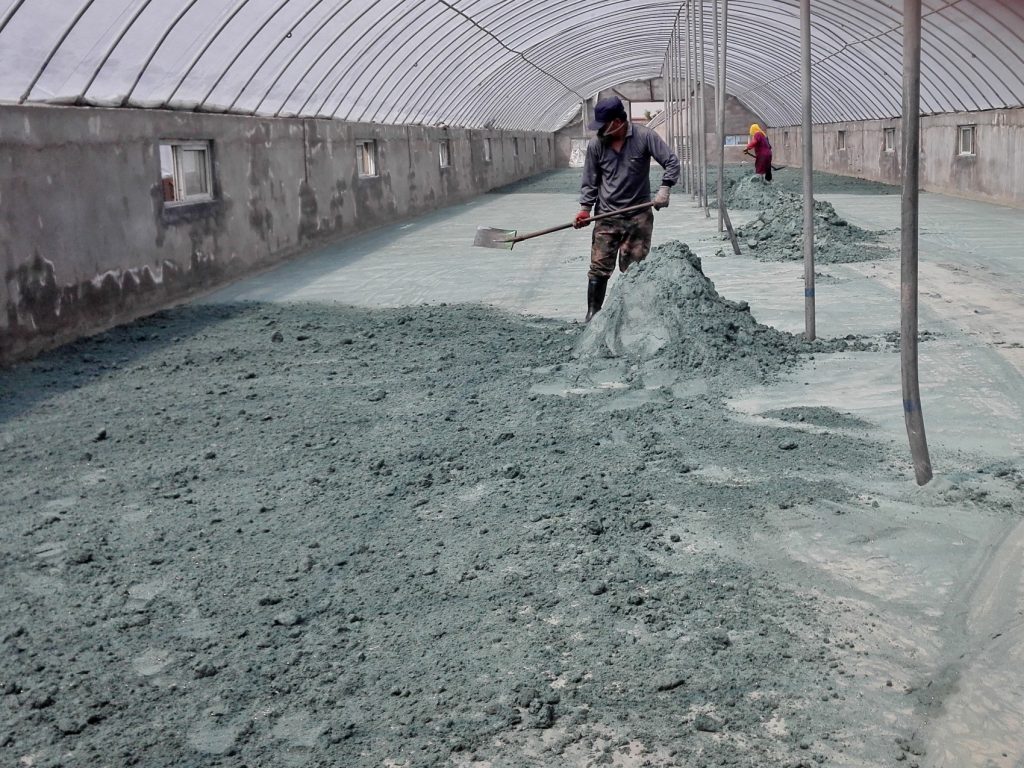
Choosing the right silicon carbide involves balancing specific application requirements, supplier capabilities, cost-effectiveness, and a supplier’s commitment to compliance and sustainability. By focusing on these critical areas, you can secure high-quality SiC that aligns with your operational and ethical standards, ensuring a successful, long-term partnership with a provider like GREAT Abrasive.

